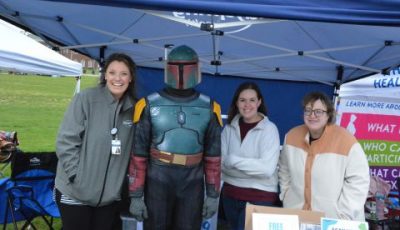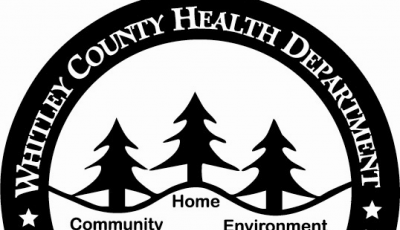Whitley Co. Health Dept. unveils ‘leave behind’ kit program to combat overdoses
 What can first responders do when they are called to the scene of a suspected overdose, but the person refuses to go to the hospital? A local health department thinks it may have found an answer to that question.
What can first responders do when they are called to the scene of a suspected overdose, but the person refuses to go to the hospital? A local health department thinks it may have found an answer to that question.
About two weeks ago, the Whitley County Health Department began distributing kits to local emergency service agencies containing supplies and resources that can help prevent drug overdoses. Public Health Director Marcy Rein said it is a program that has been in the works for a while now, and she is hopeful that it will have an immediate effect when it comes to saving lives in the community.
“We have distributed approximately 129 kits so far to local first responders,” Rein said. “That includes Corbin Police, Corbin Fire, Williamsburg Police and the Whitley County Sheriff’s office. We are still working on connecting with a few other agencies.”
Rein said that law enforcement officers have been given two kits to carry in their vehicles, and that the kits will be replaced as they are distributed for as long as supplies will allow.
As for what is in the kit, each one includes two boxes of Narcan nasal spray (4 doses), a CPR mask, gloves, a drug deactivation and disposal bag, and information on how to properly use all components. There are also several resources, such as a health department informational post card, and instructions on how to seek help for drug addiction. All materials come in a water-resistant zipper bag.
Rein explained that this new program is being implemented in response to the amount of overdose calls that local first responders receive where the person ultimately refuses to be transported to the hospital.
“Someone who has overdosed and is refusing to be transported is at a high risk of overdosing again,” Rein said. “We wanted to come into the middle of that equation, and offer another option that can help people to stay alive. We worked with several different partners to determine what a kit would look like, and how to most effectively distribute these resources. We also wanted to include the necessary information and equipment, but not make the kits so cumbersome that first responders wouldn’t be willing to carry them.”
“These kits are easy to understand, and they can simply be left at the scene where an overdose has occurred, or is at risk of occurring.”
This new ‘leave behind’ program, federally funded through the Substance Abuse and Mental Health Services Administration’s (SAMSHA) First Responders-Comprehensive Addiction and Recovery Act (FR-CARA) grant, has not been on the streets long enough for Rein to have received any type of meaningful feedback, but she is hoping that tracking data will soon show that it is becoming an effective tool in combating medical emergencies and/or deaths related to drug overdoses.
“The state has integrated a database where I can see total ambulance runs related to overdoses in our area,” Rein said. “I can tell you that, since Nov. 18, EMS has responded to 23 overdoses, with one being fatal, in Whitley County. And that is just what EMS has responded to. We know that this is an ongoing problem, and that it is significant.”
In order to help track when and where these kits are left, first responders have been instructed to scan a special QR code that is located on the bag. From there, they are prompted to answer some basic questions, such as the date, location, name of agency leaving the kit, the county, approximate age of person the kit is being left for, their gender, race/ethnicity, zip code, and total number of kits left. There are also questions related to whether this is a first contact situation, and if any training was offered at the scene.
“We have not been able to see a lot of data from other places, but I know that other communities are trying this,” Rein said, adding that she hopes to begin seeing a good amount of feedback coming in from local first responders in the coming weeks.
“There has been some frustration with people thinking that maybe this is not a good idea, but we are not just saving people from overdoses. We are also providing them with access to the resources that they need to utilize afterward. Dead people can’t recover. We need to be able to keep them alive long enough to get them into a recovery program.”







